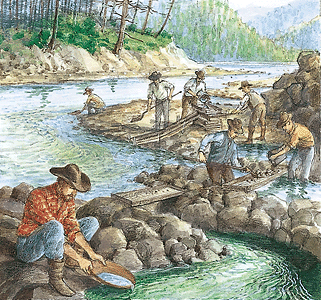I posted such much earlier in the thread, but here are my thoughts on the makeup of immigration in TTL's USA and DSA.
For the USA. there are only a few minor differences between OTL and TTL, given most of the area lost saw little immigration anyway.
First, there will obviously be little Hispanic migration, both due to the lack of a land border with Mexico, as well as the unlikelihood of anything like the annexation of Puerto Rico.
Secondly, the earlier acceptance of Catholicism should mean that immigration by all Catholic groups (Irish, Italians, Poles, etc) is slightly boosted compared to OTL.
It's also possible that if Quebec and the other Francophone-leaning states get better developed there might be a substantial amount of French immigration. It still wouldn't ever comprise a major U.S. ethnicity since the French birth rate was very low in the 19th century, thus there were always more opportunities there than elsewhere in Europe. Still, it would add more flavor.
Finally, there's the people the DSA will swallow up instead, discussed below. There's also the knock-off effects of a ruined Brazil, and the open question of whether a Latin American country will become dynamic enough to draw major numbers of immigrants.
Onto the DSA...
We've already seen the first wave of (mostly protestant) British migrate to the DSA (those who would have gone to Canada IOTL). We also know Indians are going to be brought into the DSA. The question is, who next?
Generally speaking, migrations to North America happened in one of two ways. Those who came as farmers or rural laborers looked for land with climate similar to home - hence Norwegians in the Dakotas, or Ukrainians in the Canadian Prairies, or Finns in the UP. On the other hand, people working in mines and factories didn't particularly care where they ended up.
British migration, except perhaps directly to California, will probably be spent by the 1850s. The climate just isn't as nice as other options like Australia, New Zealand, or South Africa. Hell, for a lot of people from Scotland, Patagonia might seem like a nicer place. So the DSA is going to turn south, to the Mediterranean, in order to find new migrants, including...
1. IOTL, hundreds of thousands of Spaniards migrated to Cuba and Puerto Rico. Presuming no independent Latin American nation gets its shit together, a goodly number of these are still going to want to come. This should reinforce the speaking of the Spanish language on both islands. I still say that Glen's idea of language shift isn't going to happen - Didn't for Quebec after all, but even if he goes with it, this should delay the shift by decades.
2. Brazil is a balkanized mess, so the migrants who came from Portugal (for that matter, also the Germans, Italians, and others) will be up for grabs to some extent. Portugal has always had a close relationship with Britain, and IOTL Portuguese settled to a limited extent in the Anglo-Caribbean.
3. While the lion's share of Italians will go to the USA as in OTL, the DSA should get a fair number as well. IOTL, Italians did settle in New Orleans, for example, and they migrated all over Latin America (particularly Brazil and Argentina). The DSA probably won't have a policy to attract Italians, but will get a fair share anyway.
4. Later on, I could see the DSA being a major attraction for both Greeks and Christian Arab groups. Again, this is mainly going by the climate, which, while not similar to home, is more tolerable for them than for the British. While Ashkenazi Jews will still mainly travel to the U.S., the DSA does already have a sizable Sephardic community in Charleston, and it's altogether possible the community will get itself together enough to attract significant migrants, particularly from the Ottomans.
One big plus for attracting these groups is many are Malaria-resistant to some degree, which will make them far less likely to fall ill in most lowland areas of the DSA.


